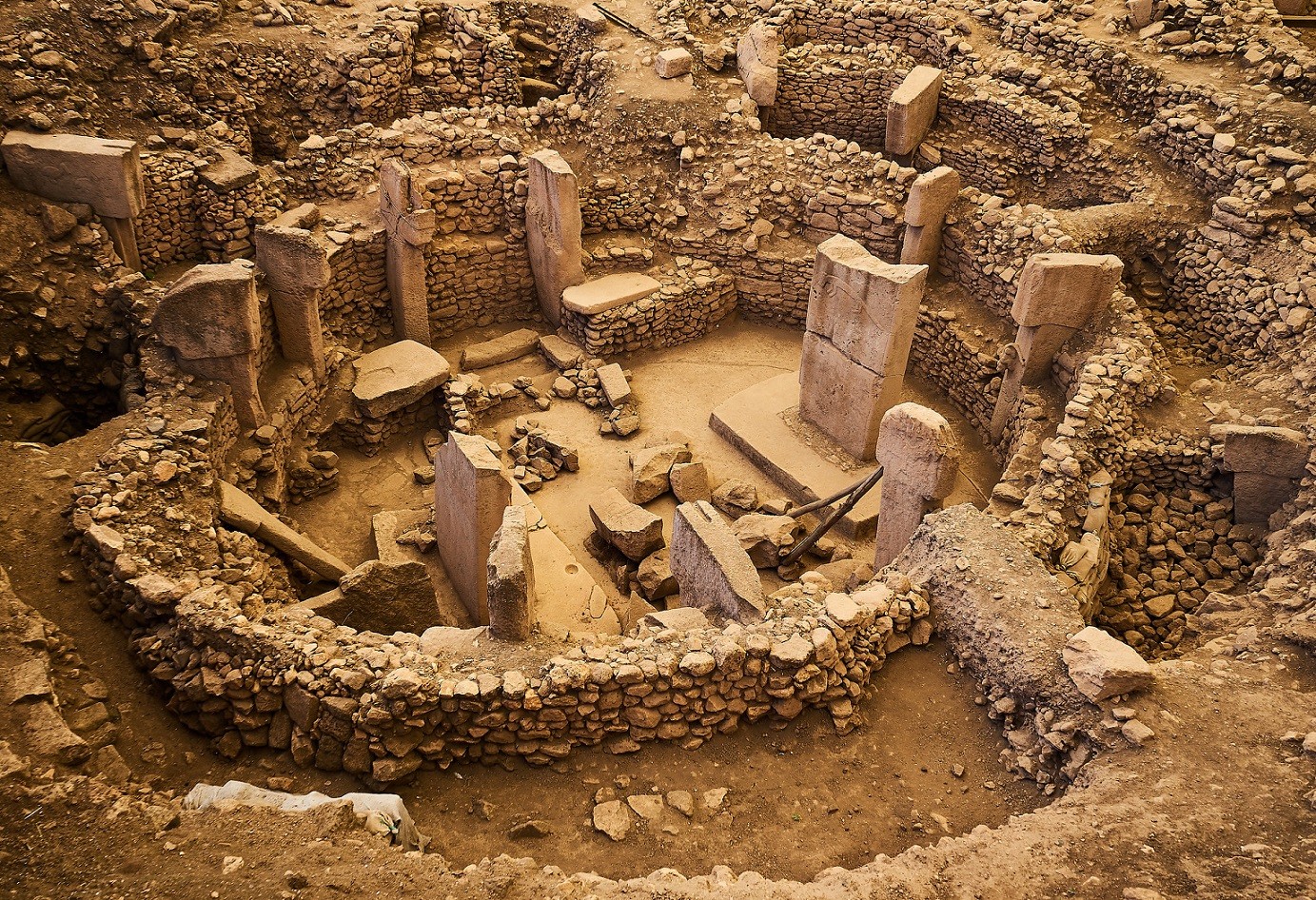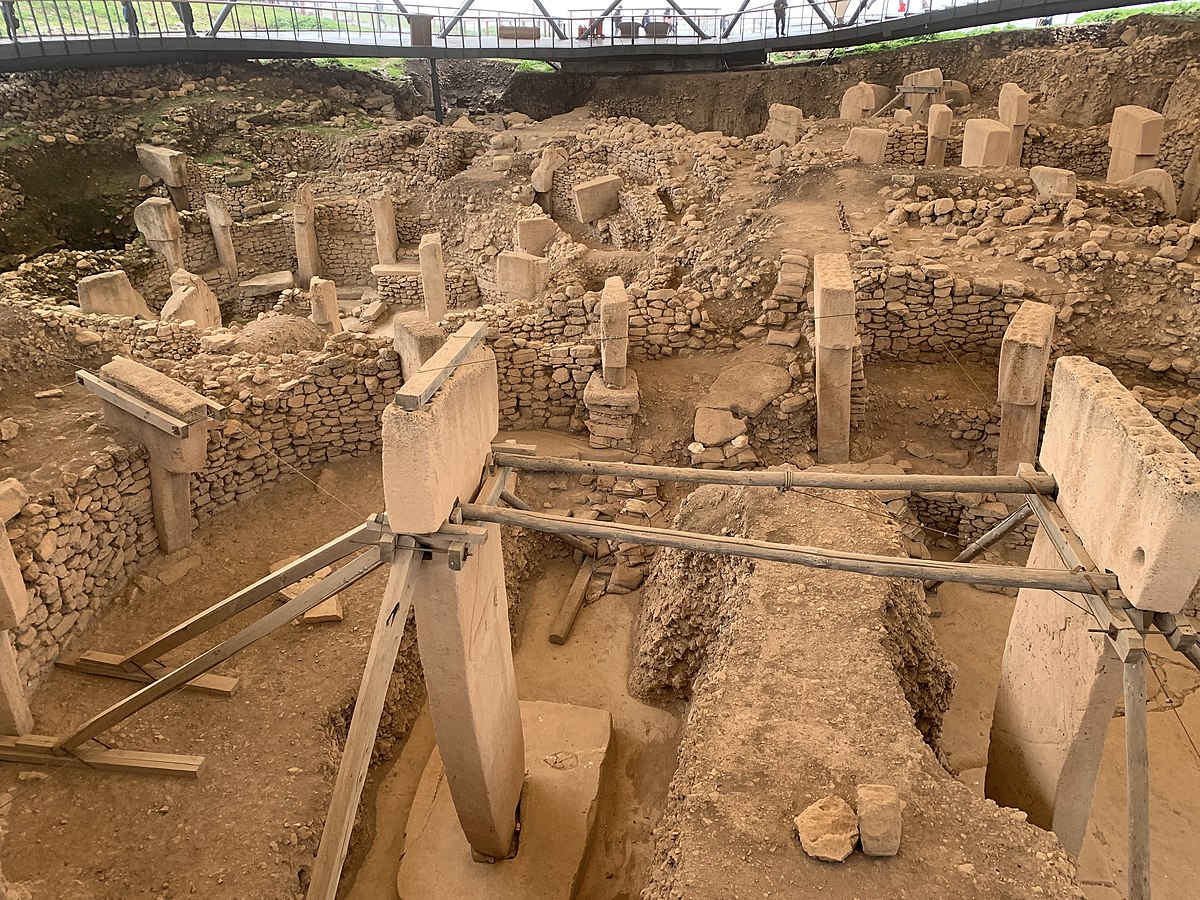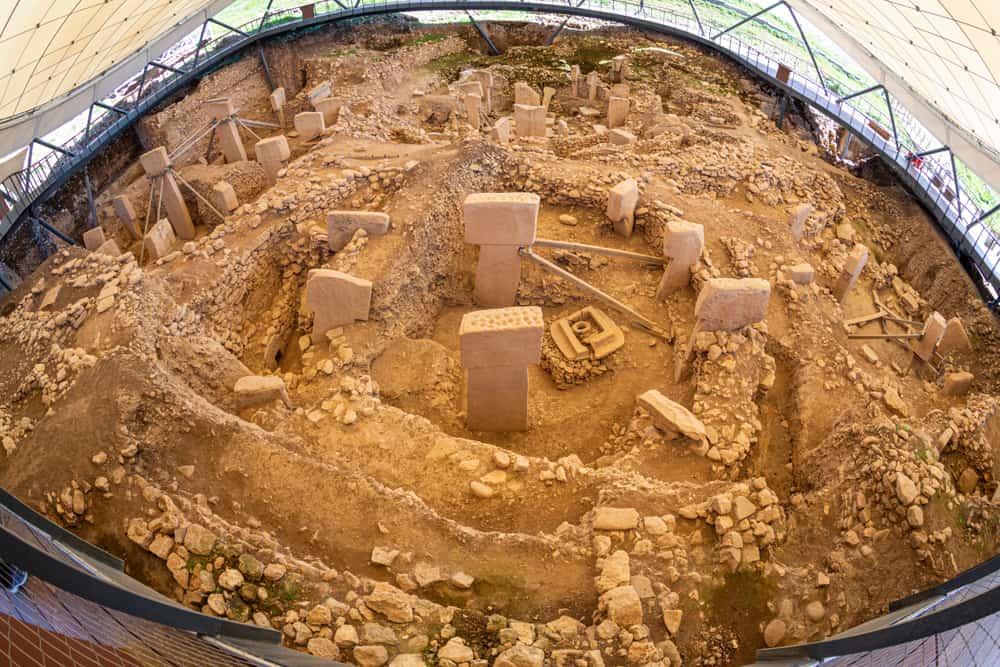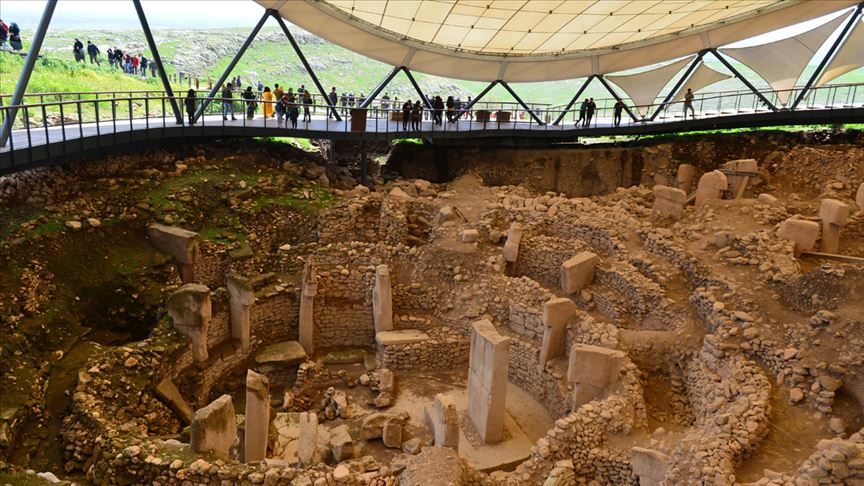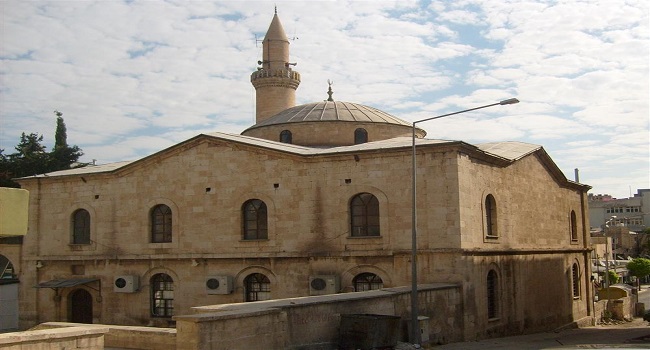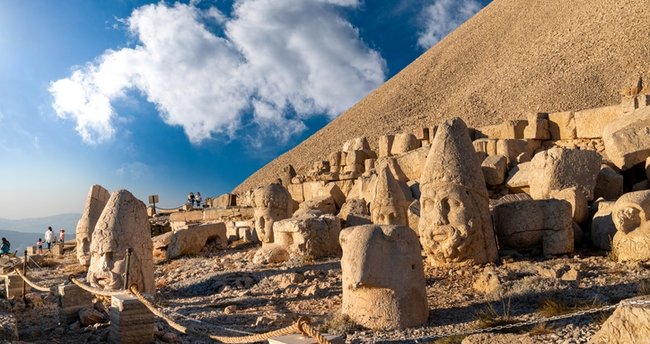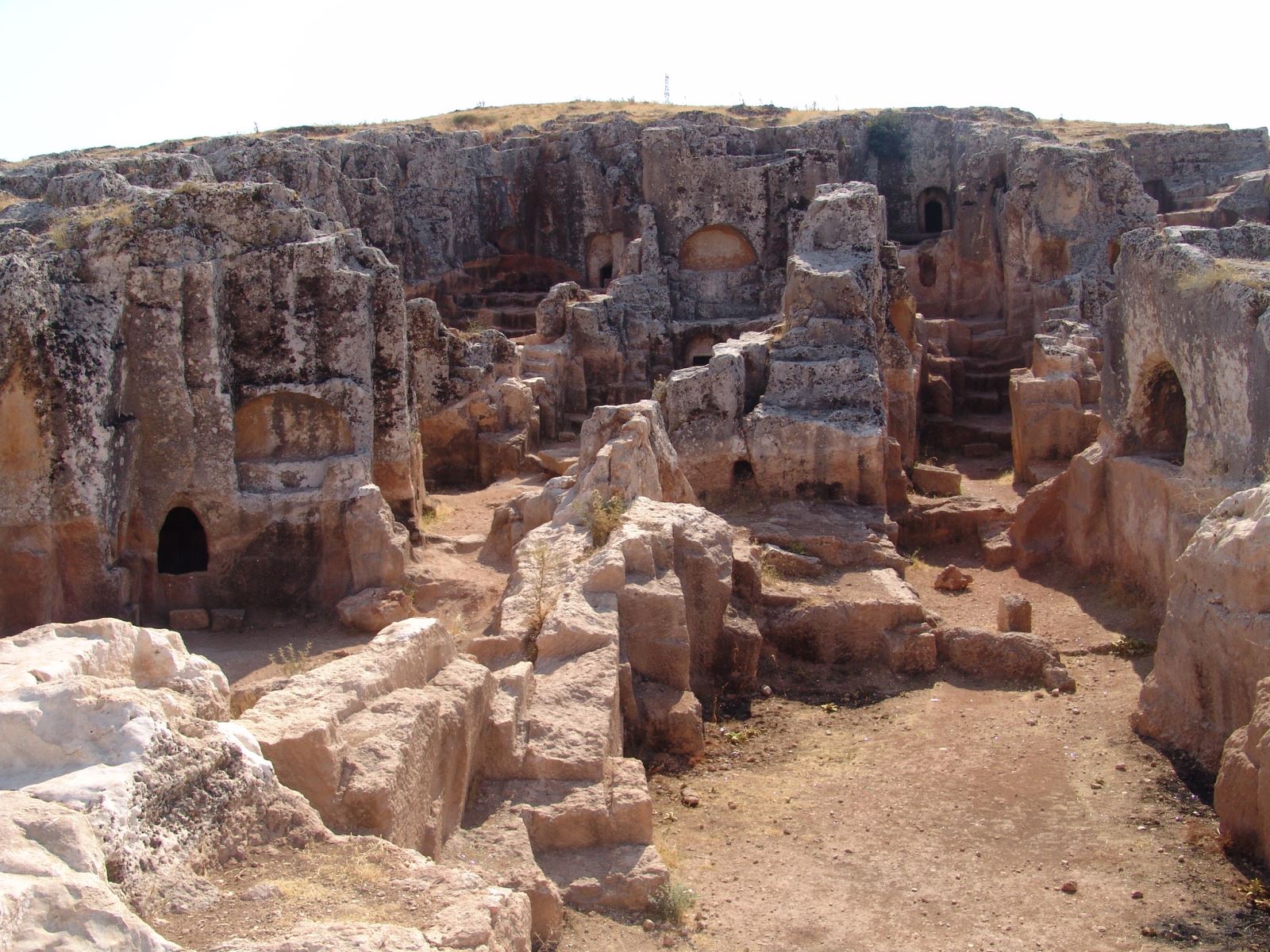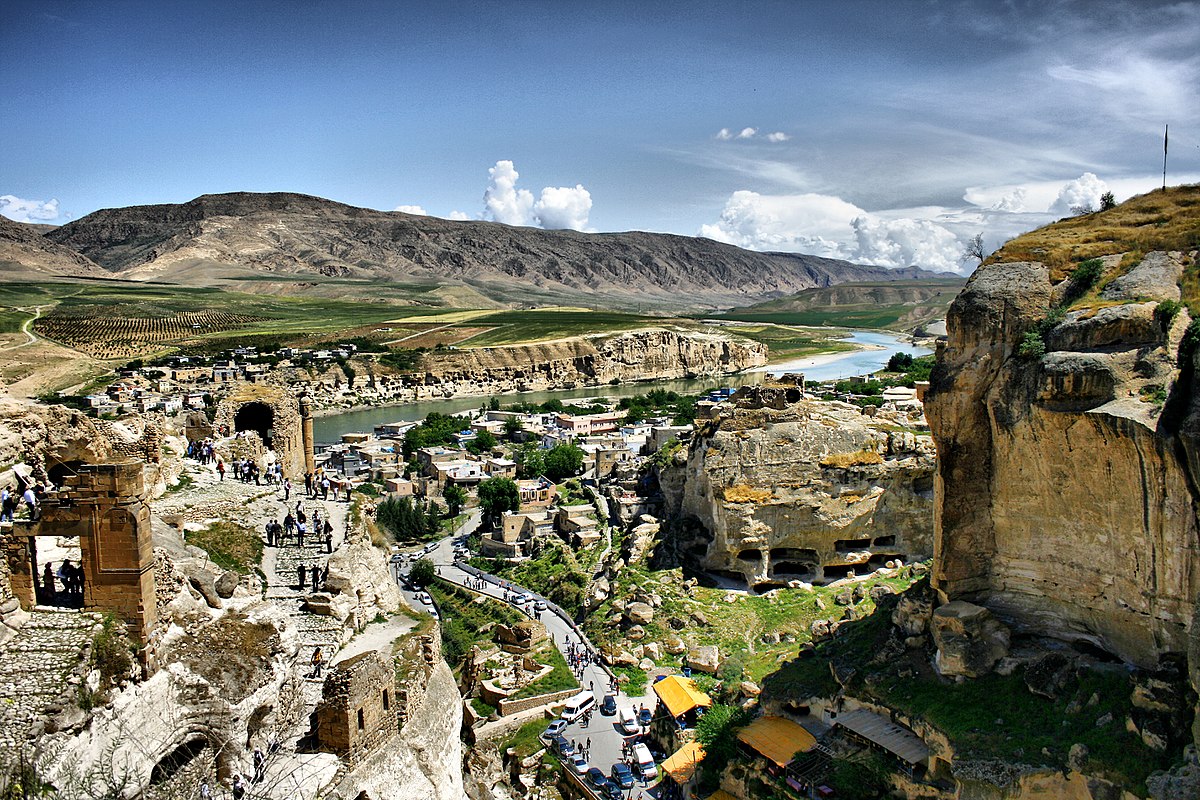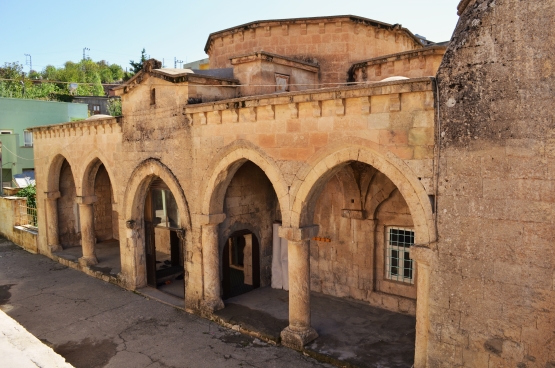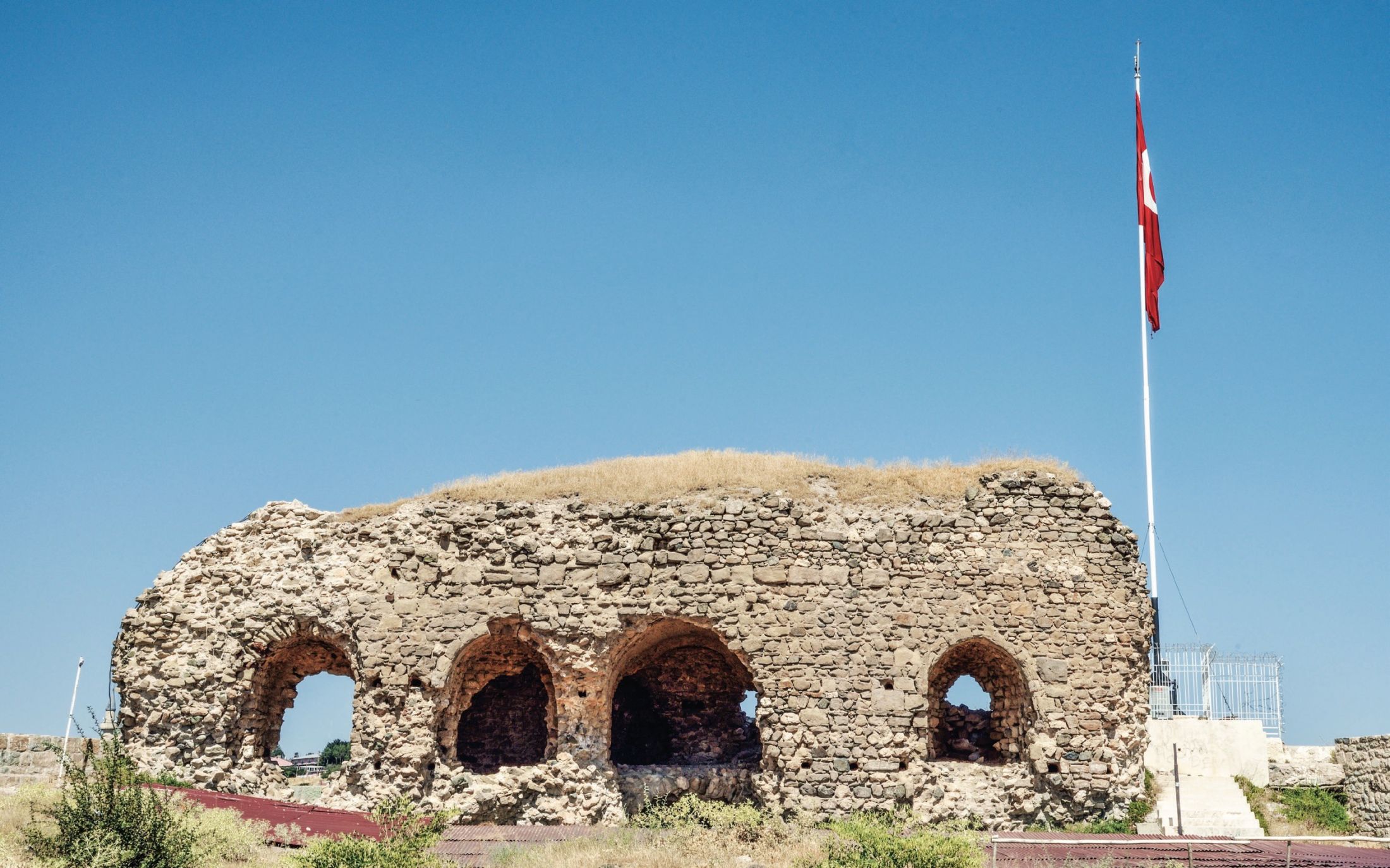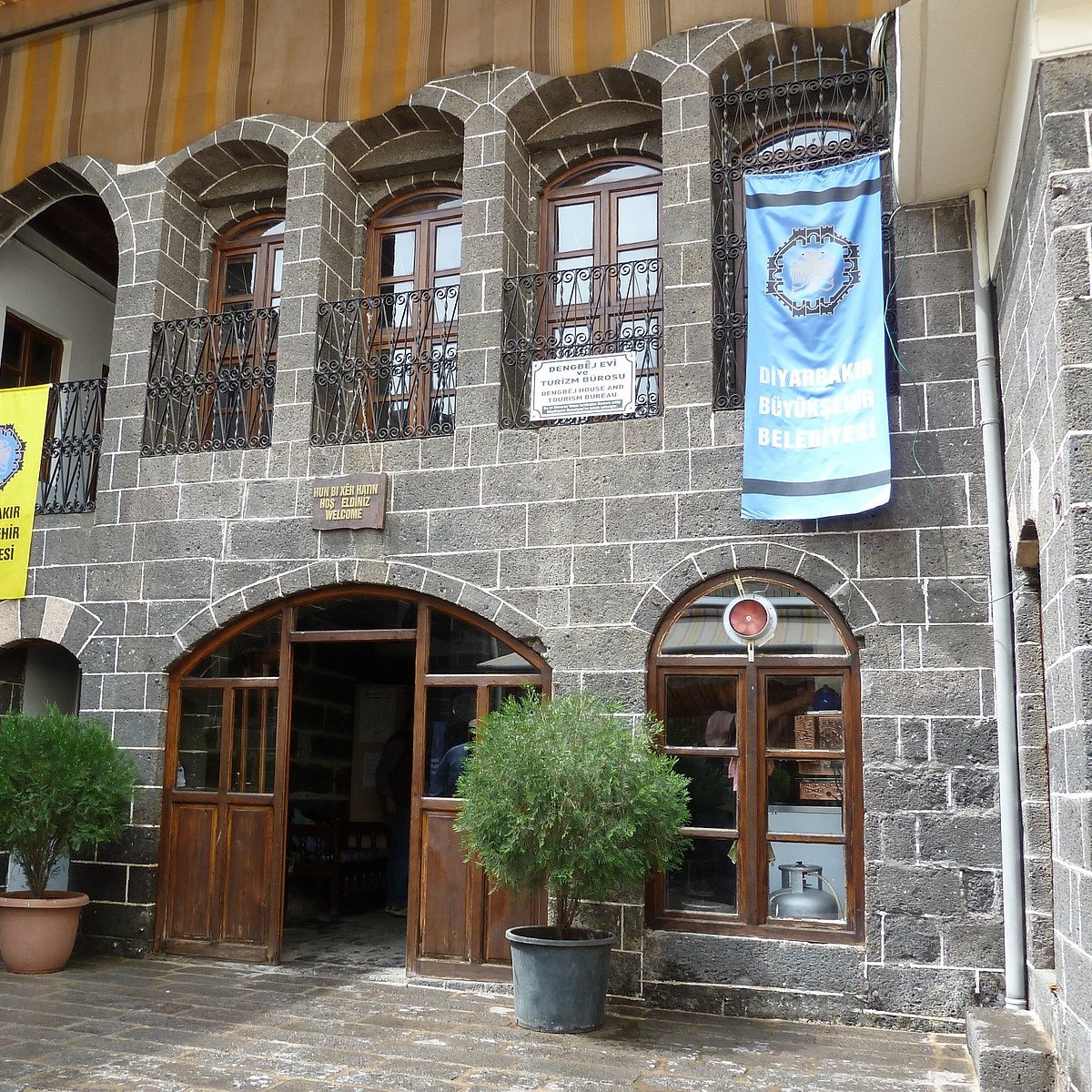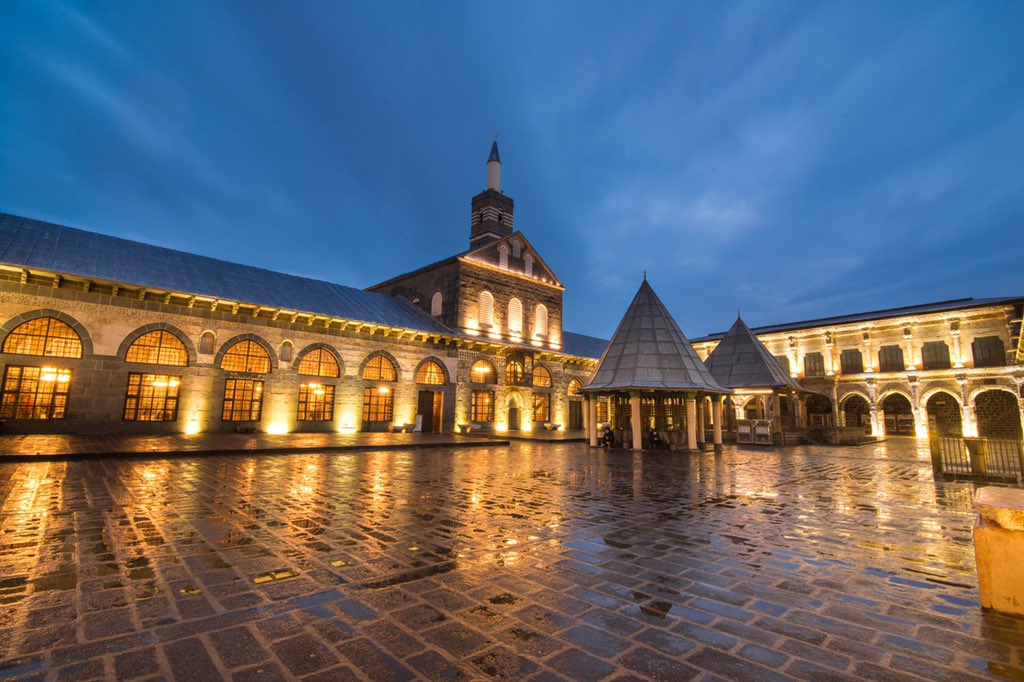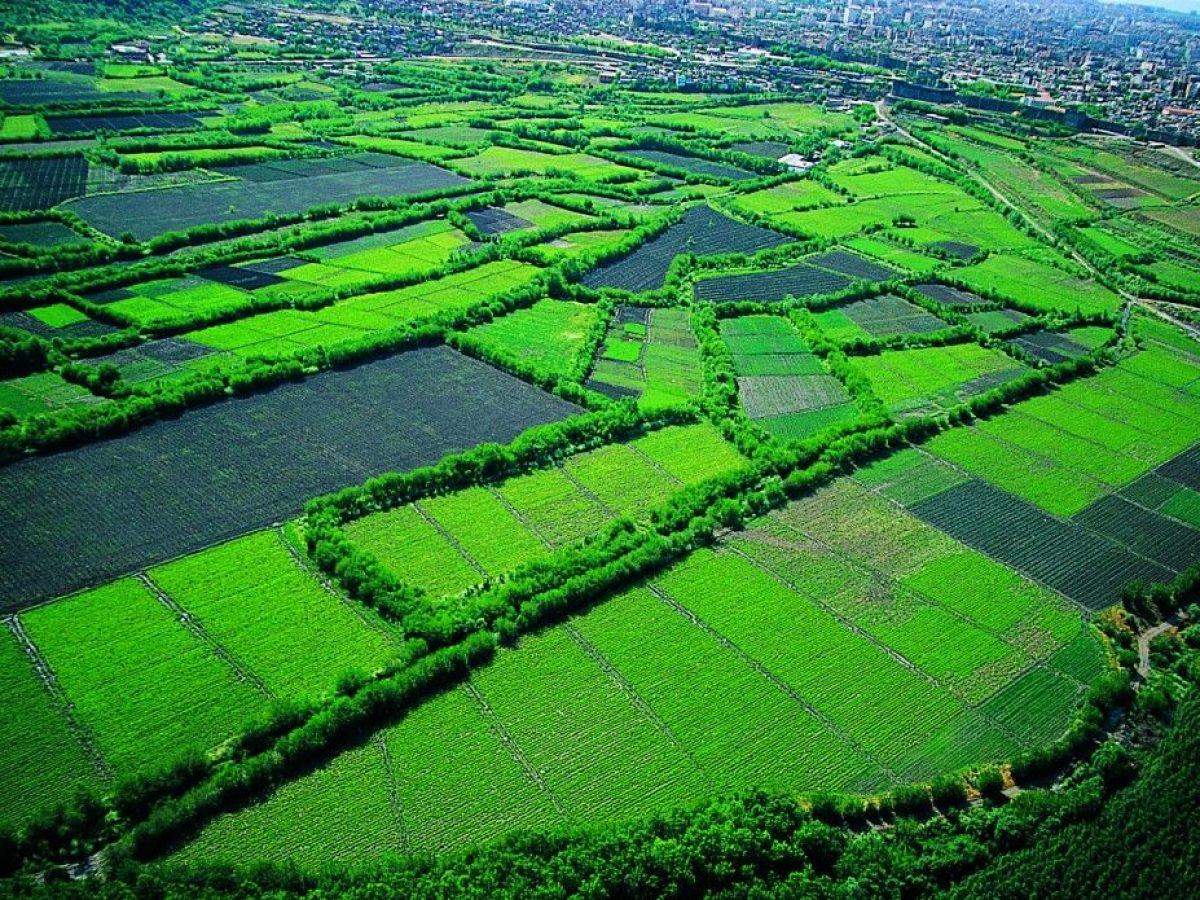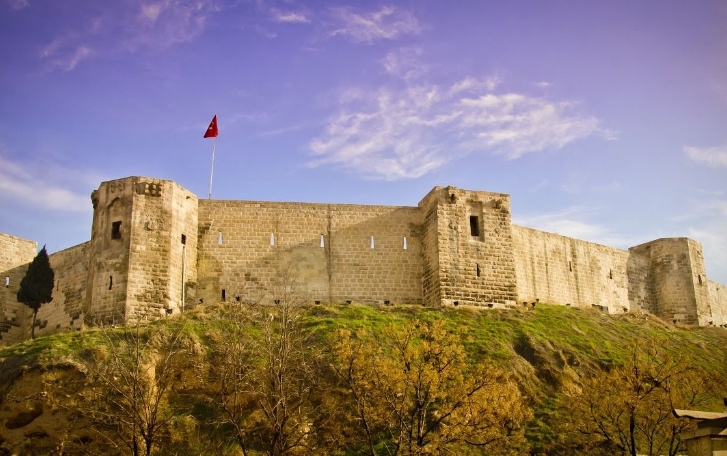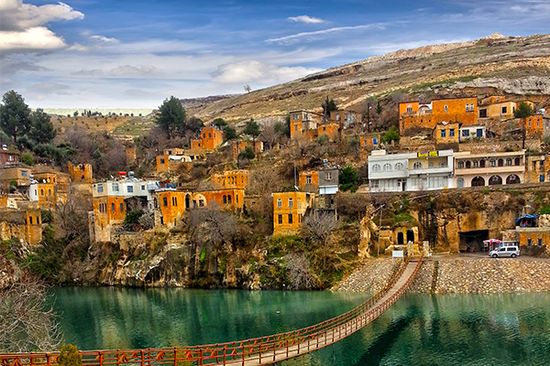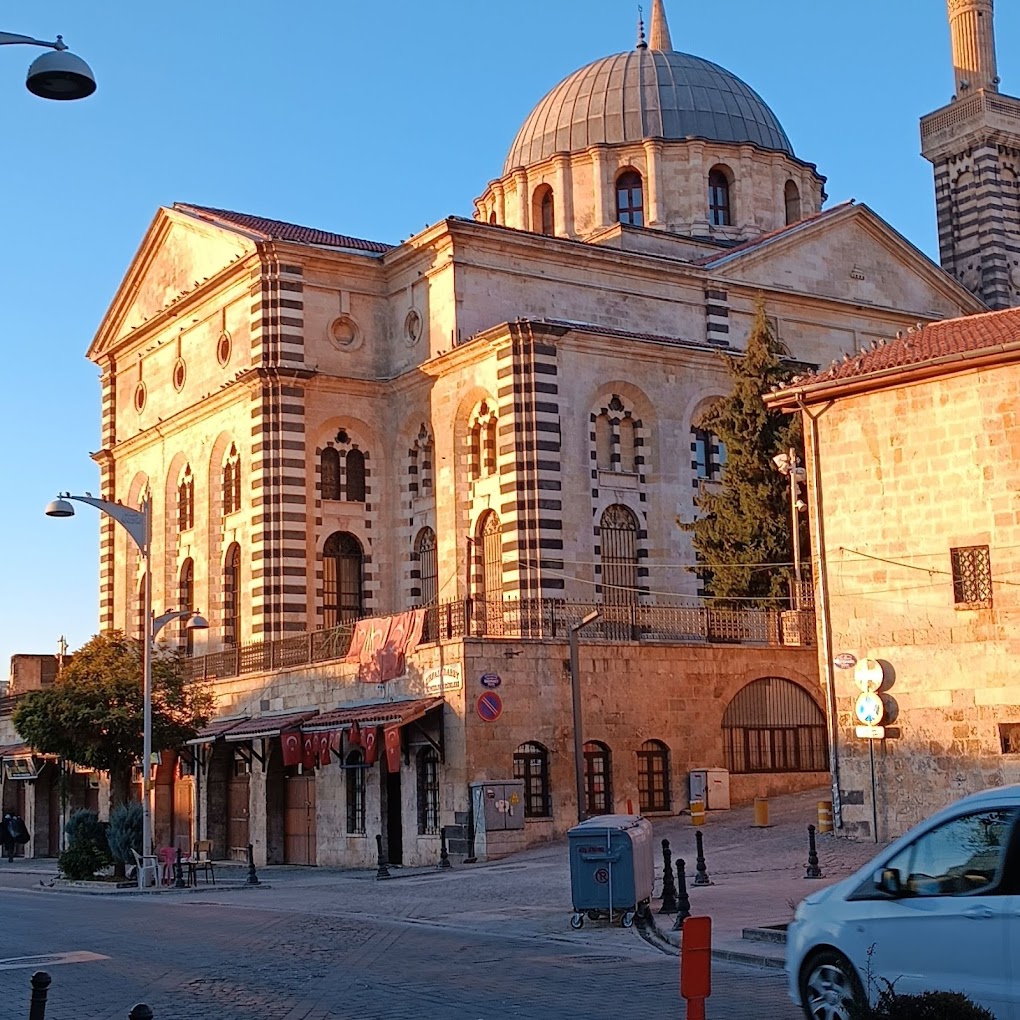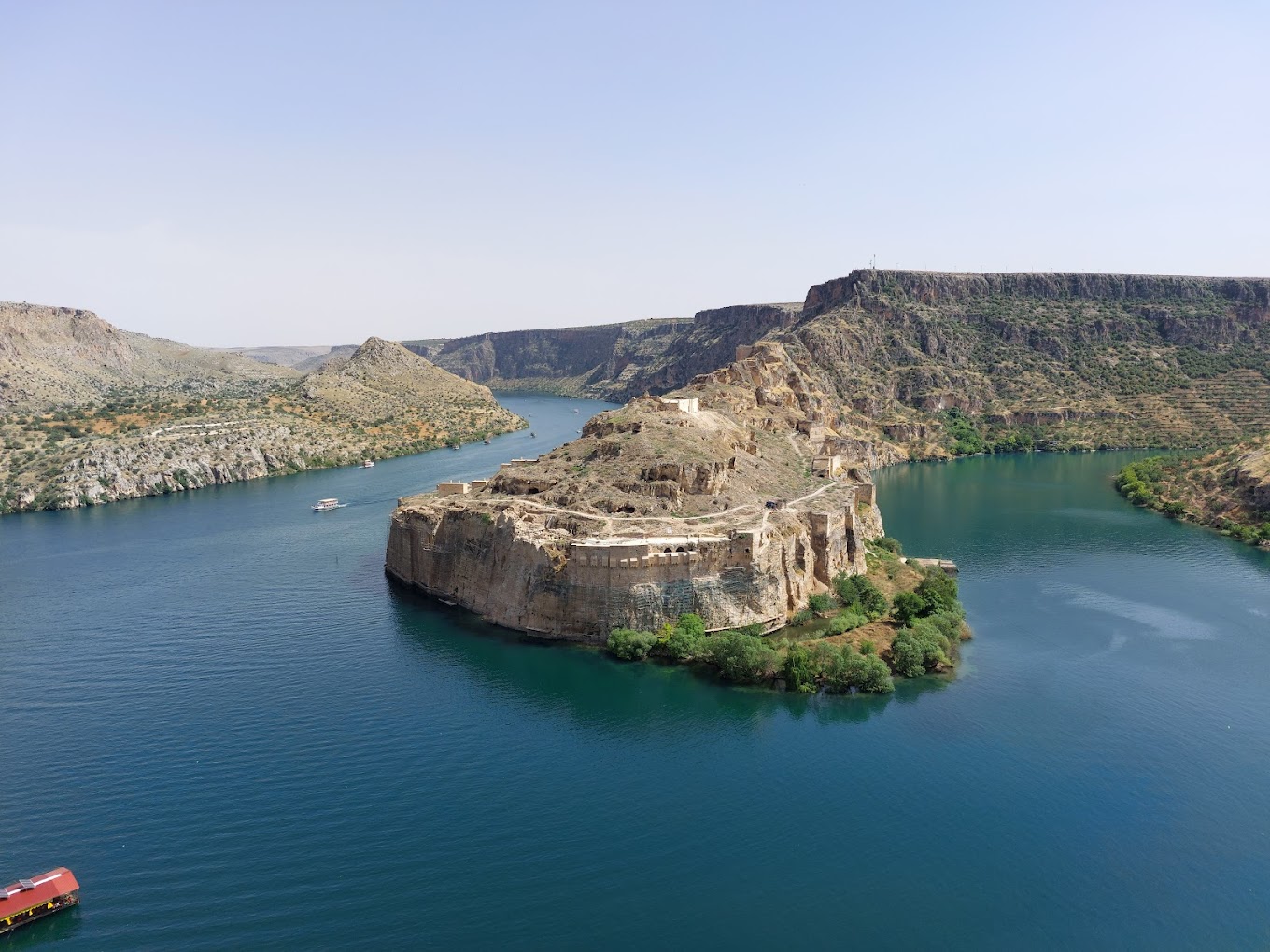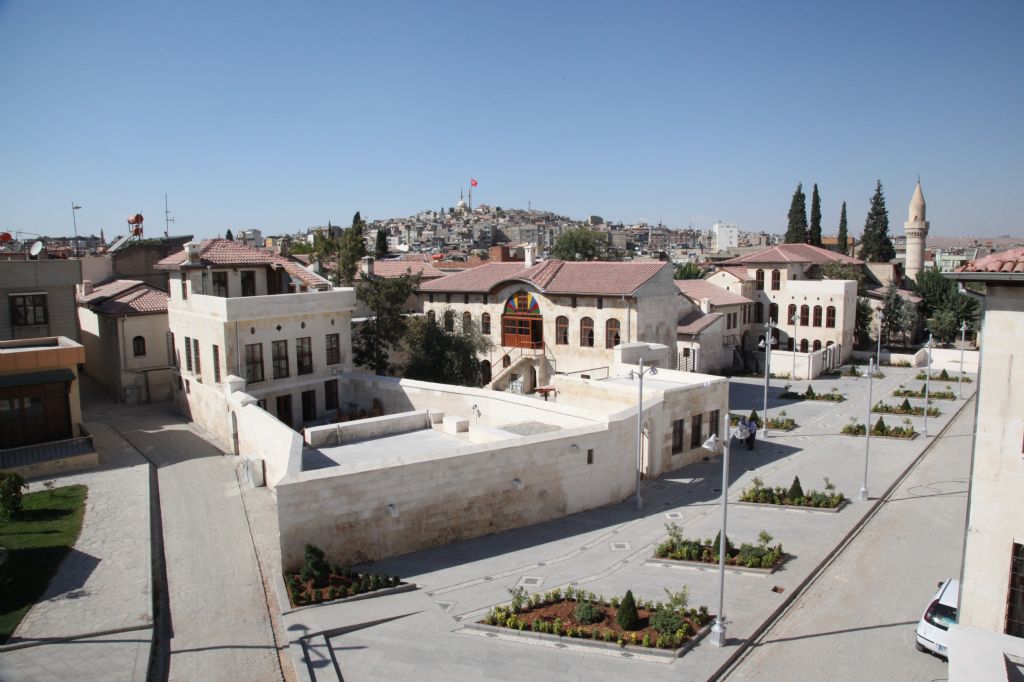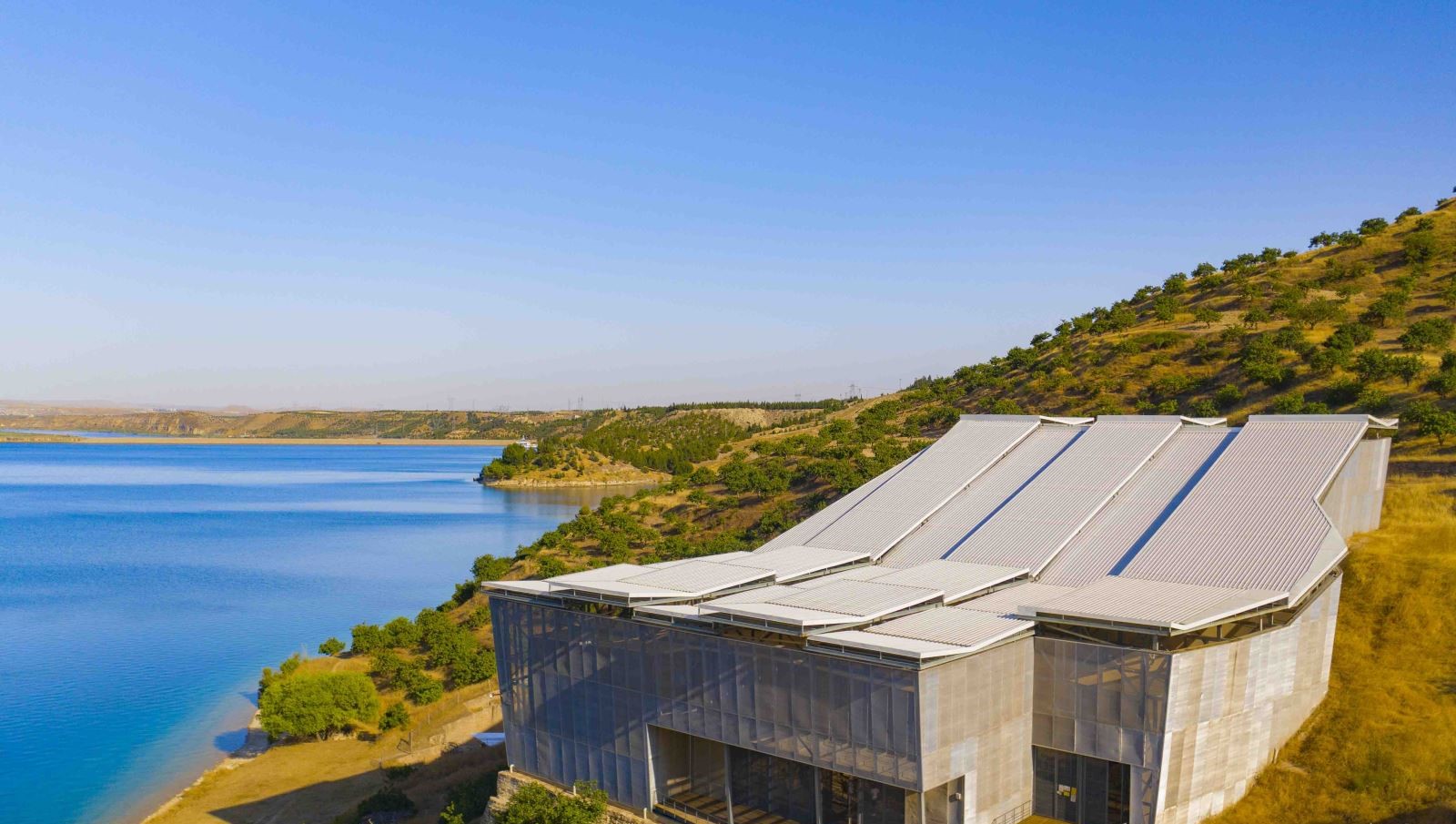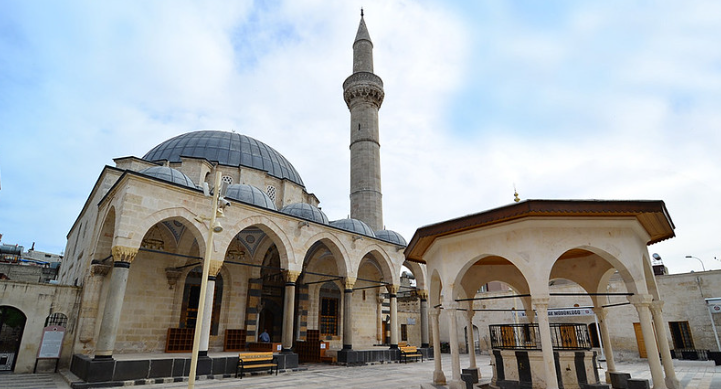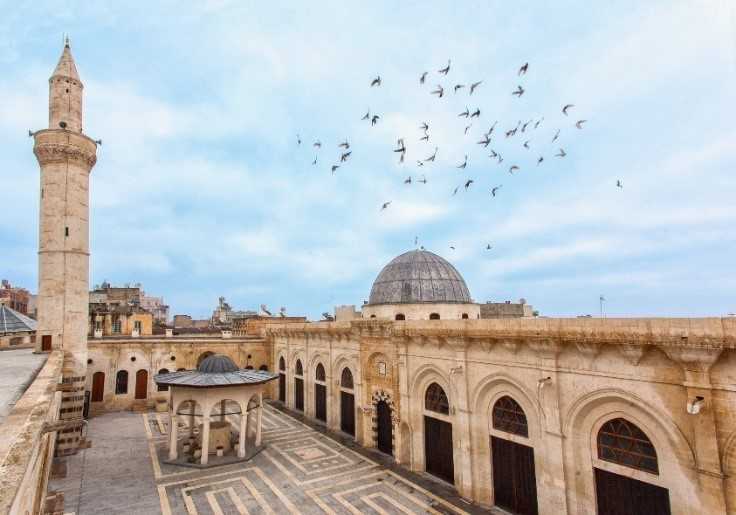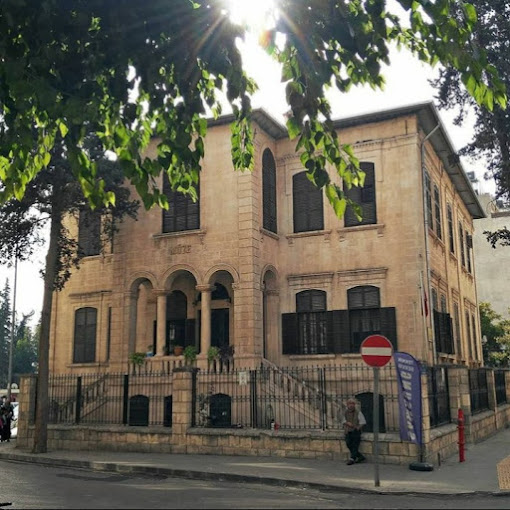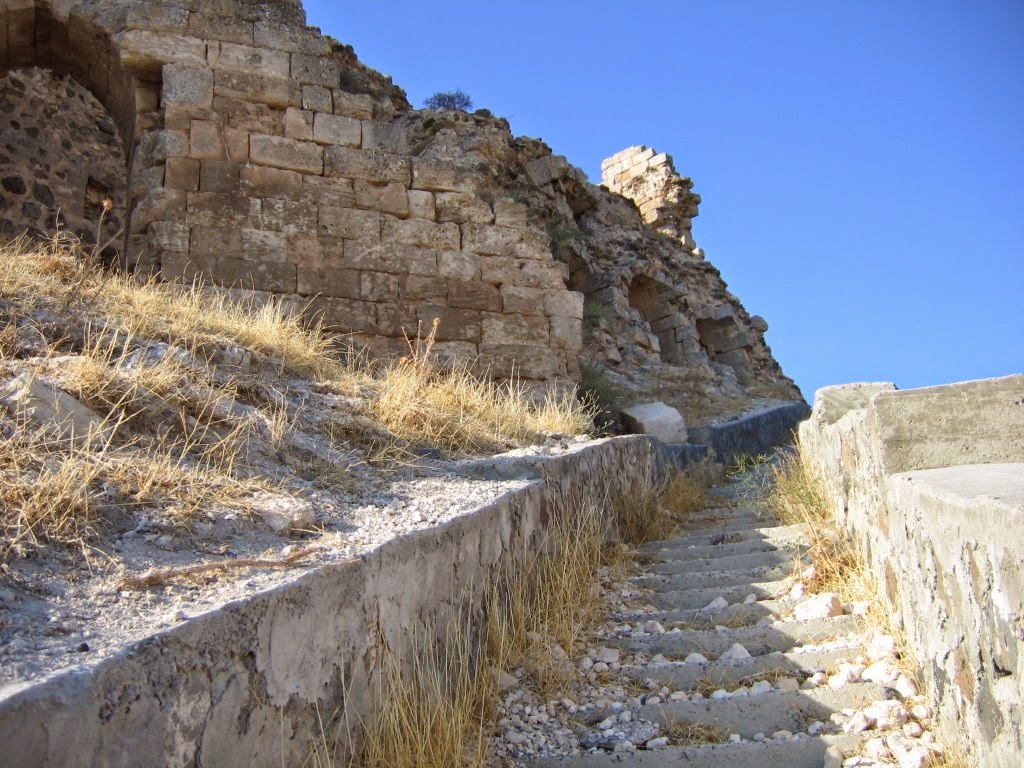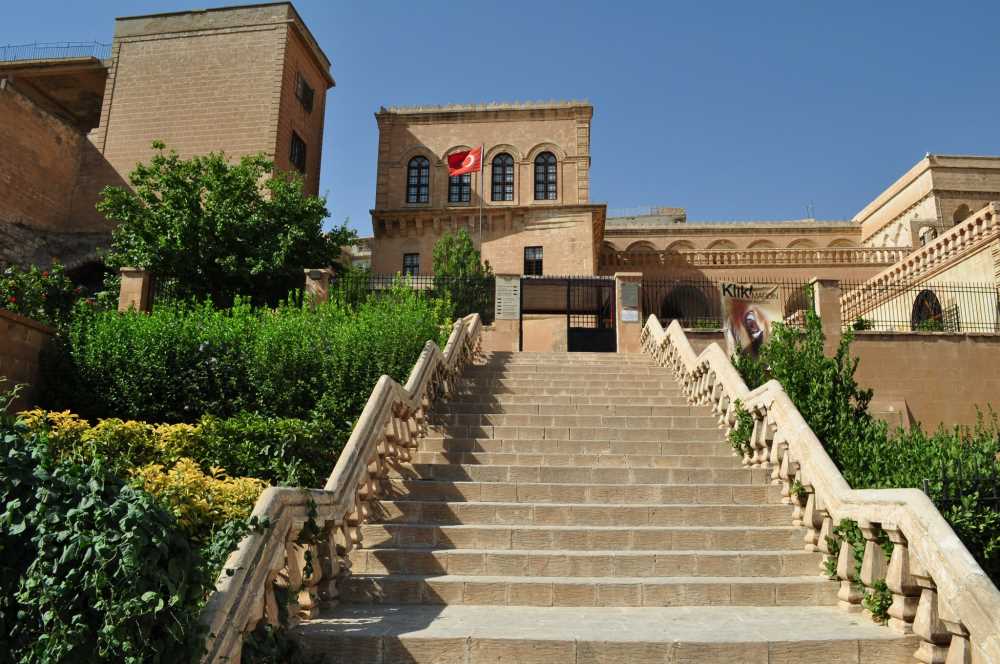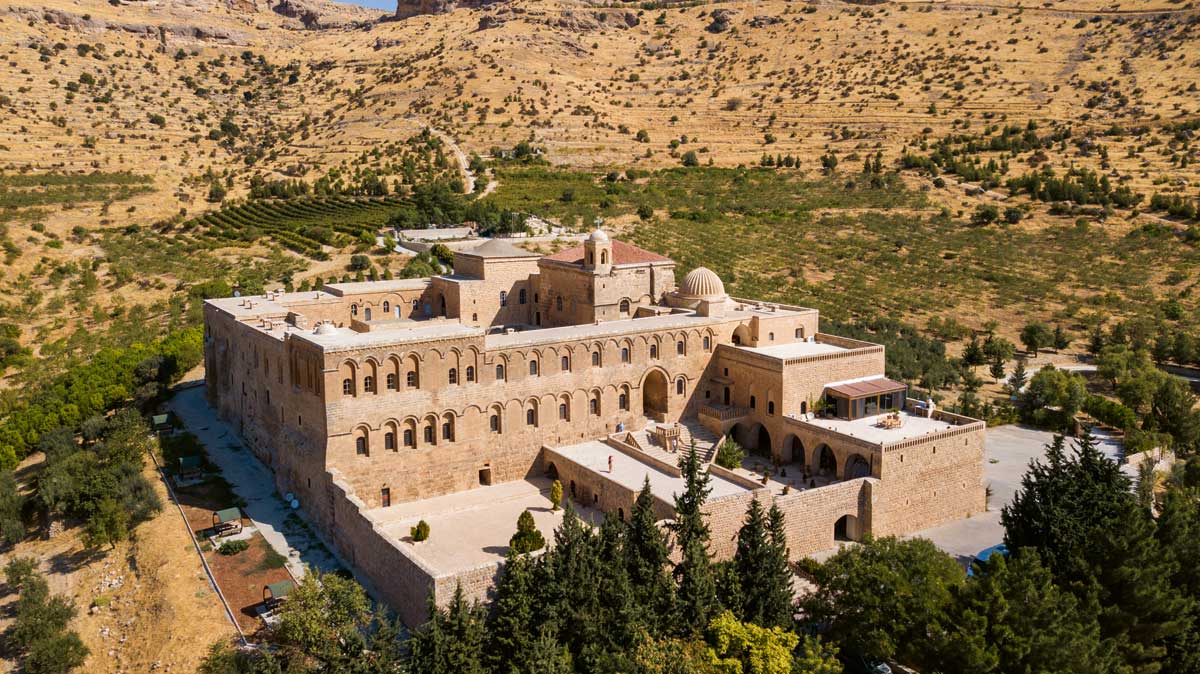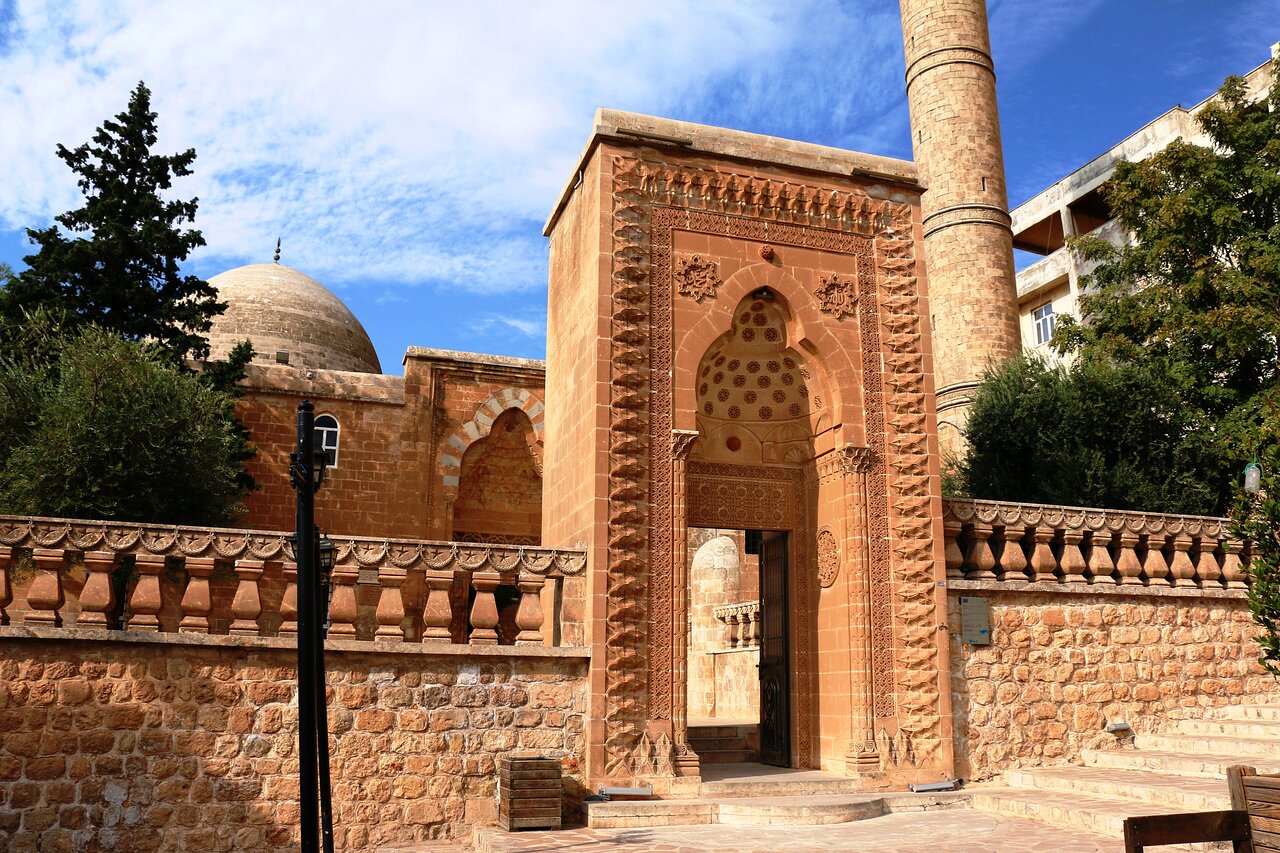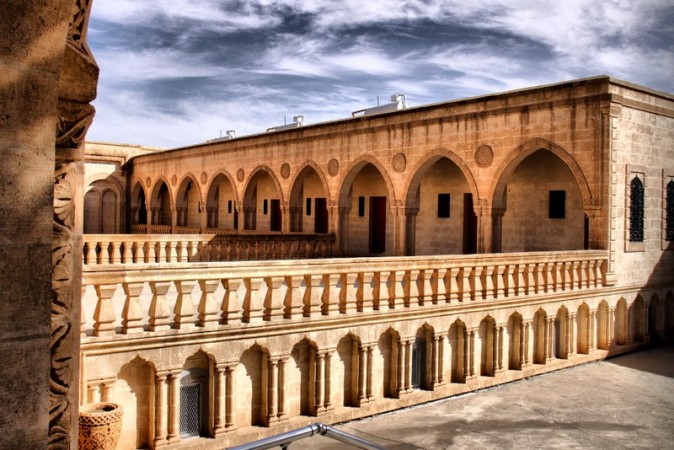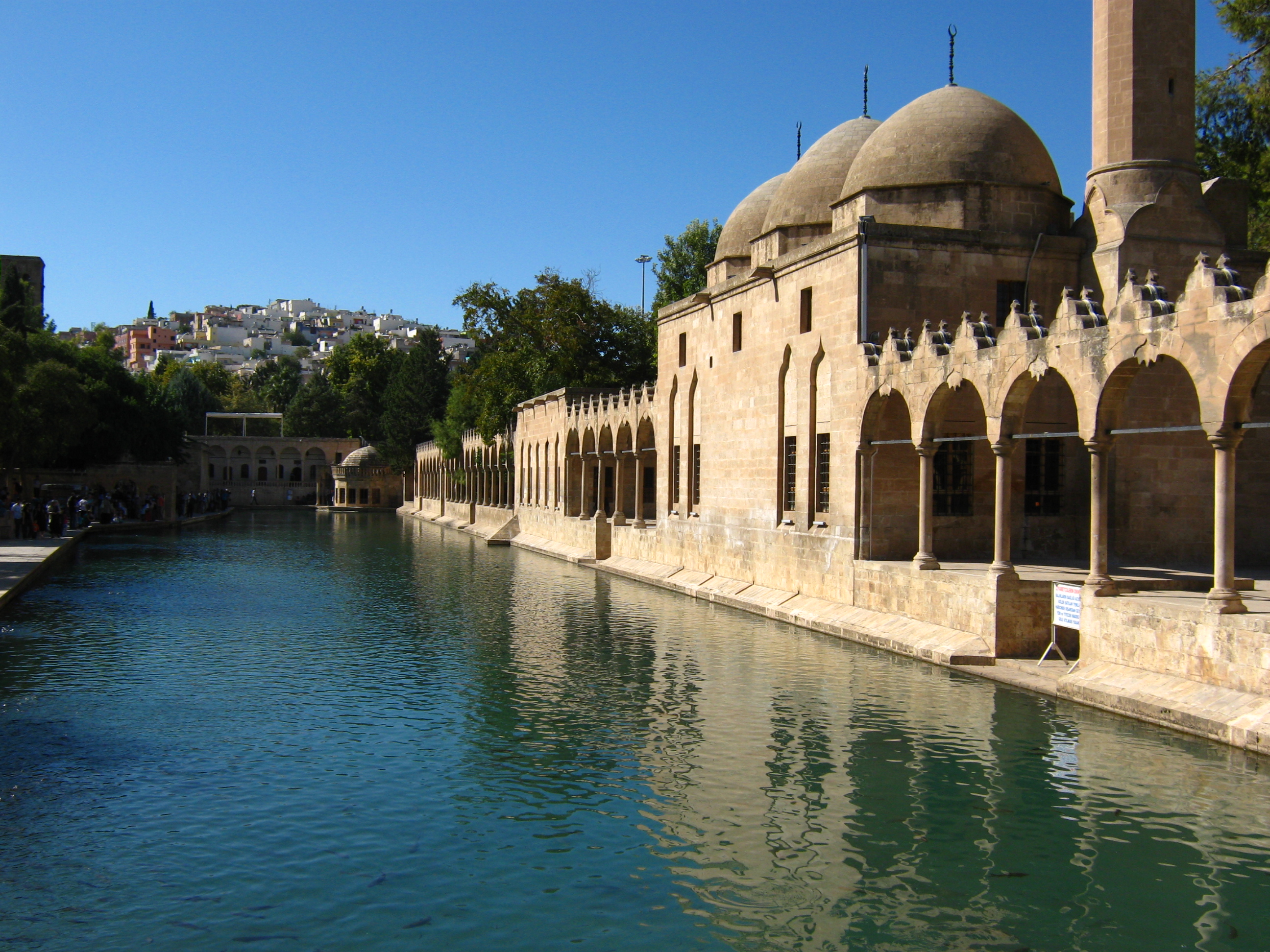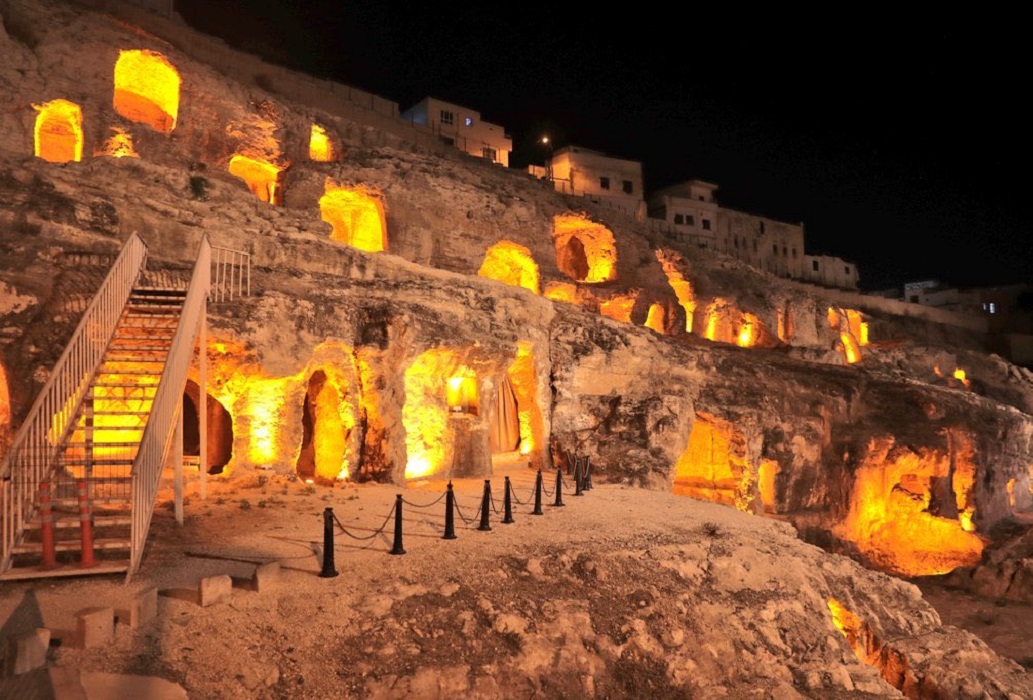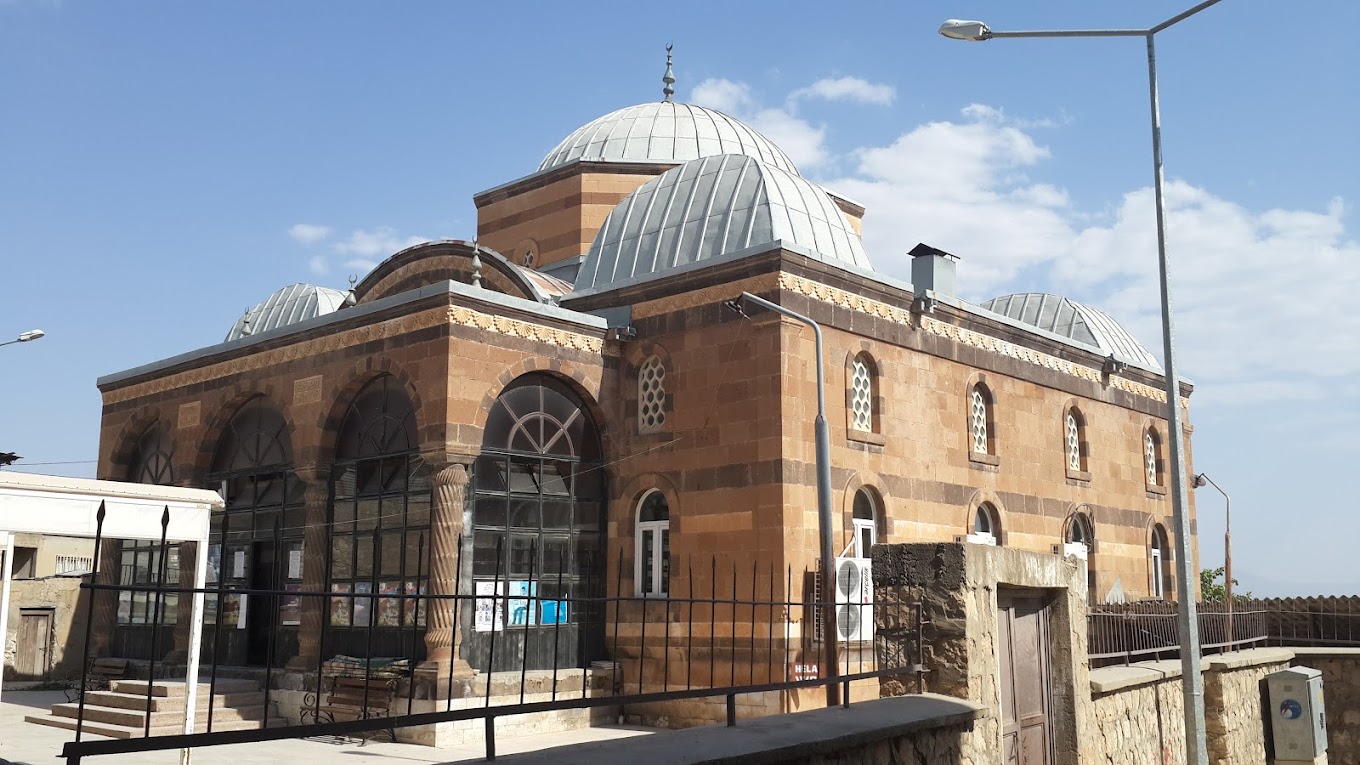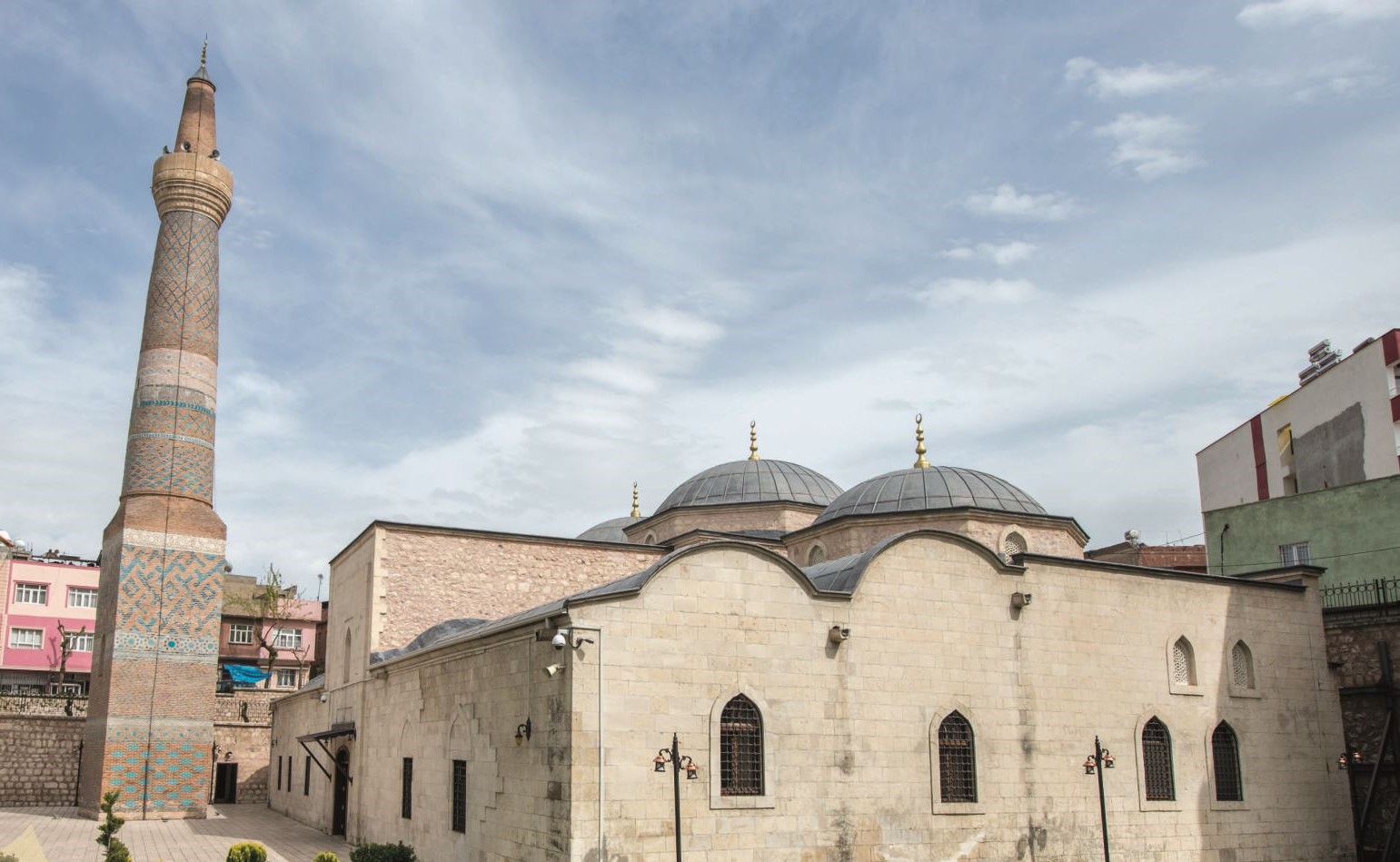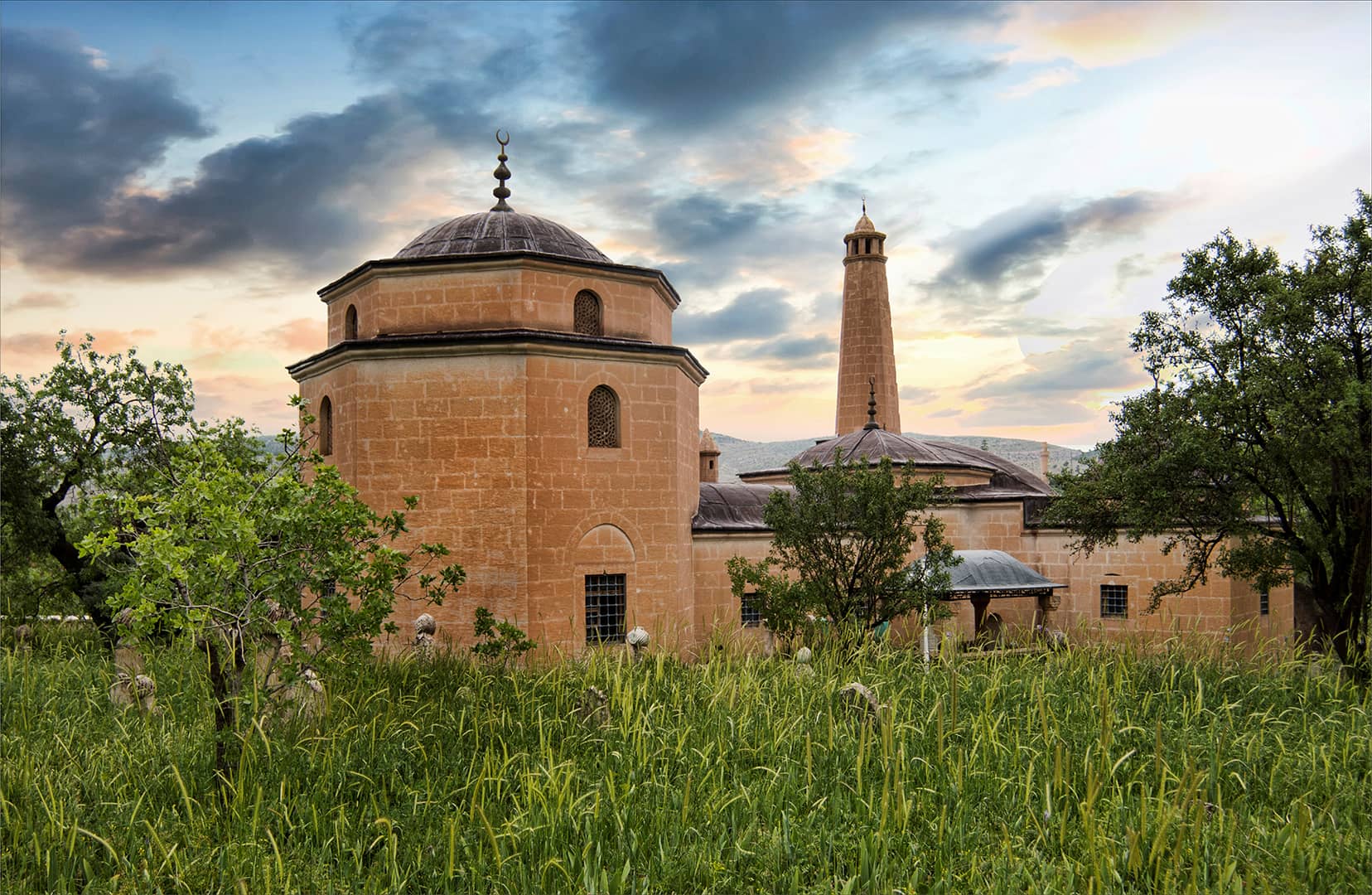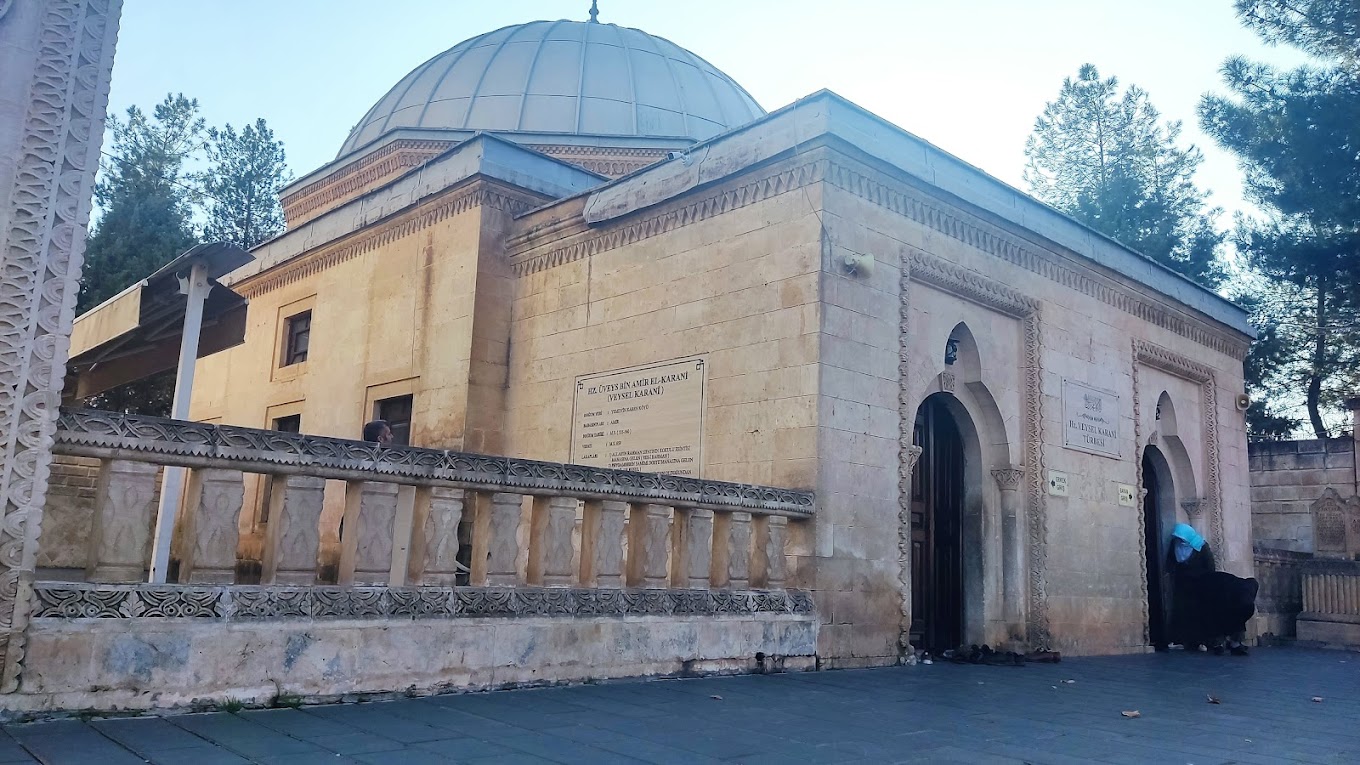Göbeklitepe
Göbeklitepe or Göbekli Tepe is the oldest known group of cult structures in the world, located near Örencik village, 18 km northeast of Şanlıurfa city center. The common feature of these structures is that 10-12 T-shaped obelisks are arranged in a circular plan, and between them are built with a stone wall. In the center of this structure, two higher obelisks were placed opposite each other. Human, hand and arm, various animal and abstract symbols are embossed or carved on most of these obelisks. The motifs in question have been used too intensely to be an ornament from place to place. This composition is thought to express a story, a narrative or a message. Bull, wild boar, fox, snake, wild duck and vulture are the most common motifs in animal motifs. It is described as a cult center, not a settlement. It is understood that the cult structures here were built by the last hunter groups who were close to agriculture and animal husbandry. In this case, it is claimed that the earliest use of the region dates back to the Pre-Pottery Neolithic Age, that is, at least 11,600 years ago. However, it is not possible to date the oldest activities in Göbekli Tepe, but when these monumental structures are examined, it is thought that they have a history dating back to the Paleolithic Age, a few thousand years earlier, to the epipaleolithic. It is understood that Göbekli Tepe's use as a cult center continued until 8 thousand BC and it was abandoned after these dates and was not used for other or similar purposes. All these and the monumental architecture unearthed during the excavations make Göbekli Tepe unique and special. In this context, it was included in the World Heritage tentative list by UNESCO in 2011 and entered the permanent list in 2018. The obelisks in question are interpreted as stylized human sculptures. In particular, the human hand and arm motifs found on the body of the central obelisks of the D structure remove all kinds of doubts on this subject. Therefore, the concept of "obelisk" is used as an auxiliary concept that does not specify a function. Essentially, these "obelisks" are stylized sculptures that depict the human body in three dimensions. Some statues and stones unearthed during the excavations here are exhibited in the Şanlıurfa Museum. It is also referred to as "the zero point of history" in popular sources.





